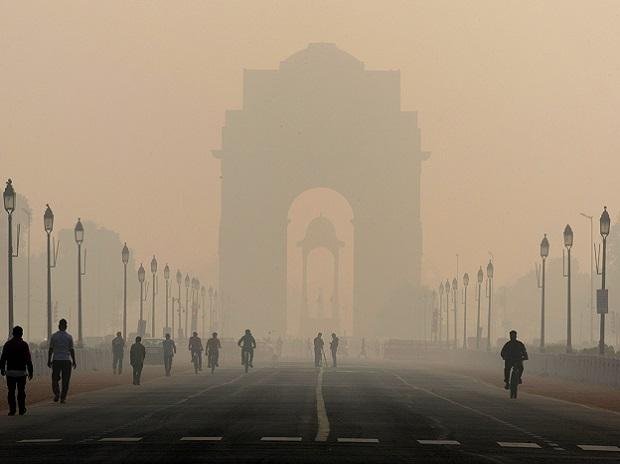Delhi's air quality 'very poor', may improve slightly

New Delhi: The national capital recorded its air quality in the very poor category on Friday morning, while government agencies said it is likely to improve slightly in the next 24 hours.
On Thursday, the city's air quality had dropped to the worst levels since November last year, with farm fires accounting for 42 percent of its pollution, the maximum this season so far.
Experts said unfavourable meteorological conditions calm winds and low temperatures and smoke from farm fires in neighbouring states pushed the air quality index to the severe zone on Thursday, the first time since January.
However, higher wind speed picked up later, helping in dispersion of pollutants.
Delhi's air quality index (AQI) stood at 397 at 9 am. On Thursday, the 24-hour average AQI was 450, the highest since November 15 last year, when it was 458.
The neighbouring cities of Faridabad, Ghaziabad, Greater Noida, Gurugram and Noida also recorded very poor to severe air quality.
An AQI between zero and 50 is considered "good", 51 and 100 "satisfactory", 101 and 200 "moderate", 201 and 300 "poor", 301 and 400 "very poor", and 401 and 500 "severe".
PM10 levels in Delhi-NCR stood at 414 microgram per cubic meter ( g/m3) at 9 am, down from 563 at 10 am on Thursday -- the highest since November 15 last year, when it was 637 g/m3, according to CPCB data. PM10 levels below 100 g/m3 are considered safe in India.
PM10 is particulate matter with a diameter of 10 micrometers and is inhalable. These particles include dust, pollen and mold spores.
The levels of PM2.5 finer particles which can even enter the bloodstream were reduced to 228 g/m3 at 9 am from 360 g/m3 at 12 noon on Thursday. PM2.5 levels up to 60 g/m3 are considered safe.
The Ministry of Earth Sciences' air quality monitor, SAFAR, said the farm fire count in Punjab, Haryana, Uttar Pradesh, Uttarakhand, and neighbouring areas increased significantly and stood at 4,135 on Wednesday, the highest this season so far.
SAFAR said the boundary layer wind direction is northwesterly favourable for the transport of pollutants from farm fires.
The share of stubble burning in Delhi's PM2.5 pollution was estimated at 42 percent for Thursday, it said.















































